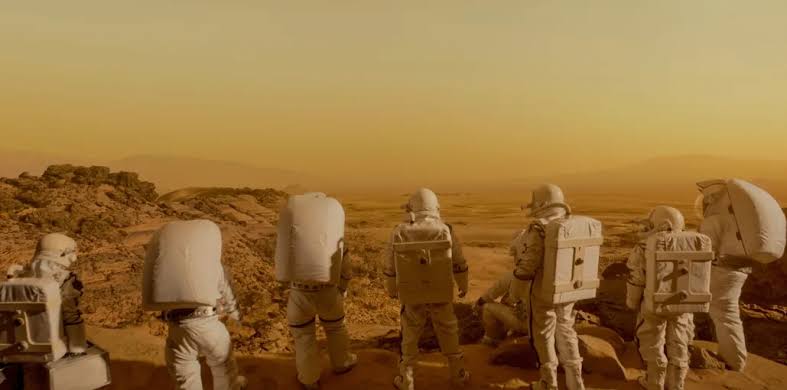The idea of humans colonizing Mars has long been a thrilling dream for space enthusiasts and scientists alike. However, experts warn that creating a human habitat on Mars may come with unexpected—and potentially drastic—consequences. Harsh conditions on the Red Planet could lead to mutations in humans, potentially altering everything from skin color to eyesight.
The Harsh Reality of Mars Colonization
While the idea of establishing human colonies on Mars sounds exciting, surviving the planet’s extreme conditions could pose serious challenges. According to Dr. Scott Solomon, a biologist from Rice University, human settlers on Mars may undergo significant evolutionary changes in order to adapt to their new environment.
Drastic Mutations on Mars: What to Expect
Dr. Solomon warns that the combination of low gravity and high radiation could trigger dramatic mutations in humans, affecting their physical and genetic makeup. Here’s what could happen:
Green Skin: Mars is constantly bombarded with radiation due to the lack of an ozone layer and magnetic field. To cope with the high levels of cosmic rays and UV radiation, humans may evolve to develop a green skin pigment. This new skin tone could help shield settlers from the harmful effects of space radiation.
Weak Muscles and Brittle Bones: Mars has only 70% of Earth’s gravity, meaning human bones and muscles would deteriorate over time. Dr. Solomon suggests that settlers’ bones could become so fragile that women’s pelvises may break during childbirth. This could pose a major health risk for future generations of Mars-born humans.
Declining Eyesight: As humans adjust to life on Mars, their need for long-distance vision may decrease. Living in enclosed habitats, settlers won’t have to see far distances, leading to a decline in eyesight over time. This adaptation could result in generations with significantly weakened vision.
Radiation Risks on Mars: No Shield from Cosmic Rays
Mars’ environment lacks Earth’s protective ozone layer and magnetic field, exposing the planet to dangerous space radiation. Cosmic rays, UV light, and charged particles from the sun will be ever-present threats to human health. The constant exposure to these radiation sources could cause genetic mutations at an accelerated rate, pushing humans to evolve more rapidly than they would on Earth.
In his book Future Humans, Dr. Solomon speculates that these mutations might give rise to new adaptations, such as green skin, that help shield against radiation. As he suggests, “Maybe we get our own green men.”
Evolution on Mars: A New Human Species?
If humans continue to live and reproduce on Mars, the mutations caused by radiation and low gravity could eventually result in the emergence of an entirely new species. Over time, settlers’ bodies would become more suited to Mars’ extreme conditions, creating a distinct evolutionary path separate from that of humans on Earth.
The Future of Life on Mars: Is It Feasible?
While establishing a human presence on Mars is a monumental goal, it’s clear that life on the Red Planet will come with significant challenges. From mutations in skin color to deteriorating eyesight, surviving Mars’ extreme environment could change the very nature of humanity.
As the dream of Mars colonization becomes more tangible, it’s crucial to consider the long-term impact on human health and evolution. Will we evolve into a new species adapted to life in space? Only time will tell.

